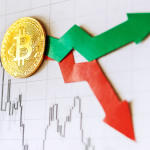A derivative or other second-order byproduct exists when a security trades publicly. Put options, REITs, and rainbows are all contingent on an underlying stock, real estate, or even multiple stocks. The same byproducts exist with futures. They’re contracts on which you’re betting whether a commodity will rise or fall in price by a certain date.
Key Takeaways
- Futures are contracts that involve speculation as to whether a commodity will rise or fall in price by a certain date.
- Prices of upcoming futures can trend downward due to economic uncertainty, unimpressive growth, or political agitation.
- Stock index futures operate differently from futures contracts for tangible securities.
- A stock index future doesn’t hold a position in the stocks that make up the index so it doesn’t pay dividends.
Understanding Future Contracts
Buying and selling futures is the art of transferring risk. The commodity that acts as the underlying security can be perishable such as cattle or wheat or nonperishable such as silver or platinum It can even be something intangible like a market index.
A stock market index such as the Dow Jones Industrial Average or the S&P 500 is just a number that represents a collection of stock prices manipulated arithmetically. The index is a quantity but not really of anything you can taste or touch.
We can add another level of abstraction, however, and create a futures contract for a stock index. Speculators can take positions with the resulting index futures contract on what direction the market-at-large will move. These speculators are buying or selling a number.
Futures Pricing Example
E-Mini S&P 500 futures contracts expire and settle mid-quarter. The E-Mini closed at $6,001.75 on Dec. 20, 2024. The next three upcoming closing dates for futures will be March 21, 2025, June 20, 2025, and Sept. 19, 2025. Let’s look at some hypothetical closing prices for those dates:
- March 2025 trading at $5,936
- June 2025 trading at $5,850
- September 2025 trading at $4,760
March and June would hurt somewhat and the September closing would be a substantial loss. Will the market lose another 7.9% of its value by December 2025? Collective wisdom has determined that $4,760 is the point at which speculators en masse have agreed to meet.
It’s like betting on a point spread for a football game. Let’s say Team A is favored to beat Team B by 3 points in an upcoming game. That spread number need not be an accurate representation of the teams’ relative strengths. It means that a wee bit more of the marketplace has committed money to the proposition of saying “yes, they will” as saying “no, they won’t.” Undue pessimism or optimism about the game’s outcome will distort the spread.
Factors That Influence Price
Why do the prices of upcoming futures trend downward rather than up or even just stay neutral? The usual suspects are to blame: economic uncertainty, unimpressive growth, or perhaps a base level of political agitation.
Important
Stock index futures should track actual index movements, at least superficially.
Buy an index fund that tracks the Dow or the S&P 500 and you can expect to pay a certain price that’s directly proportional to the level of the index itself. The two fluctuate in step or close to it.
One significant difference between stock index futures and index funds is that index futures don’t take dividends into account. An index fund holds positions in the various stocks that make up the index. It’s eligible for whatever dividends those companies’ managers decide to pay out to shareholders. An instrument as abstract as a stock index future doesn’t hold a position in the stocks that make up the index and it therefore doesn’t hold any potential for dividends.
What Is a REIT?
REIT is the common abbreviation for a real estate investment trust. A REIT is a company that owns or finances real estate that produces income. Investors can buy dividend-buying shares of the company that may appreciate if the properties make money.
What Is a Rainbow Strategy?
A rainbow strategy diversifies a portfolio by including assets from various sectors. It can hedge against risk.
How Does an Index Fund Work?
An index fund holds investments that mimic those of an underlying index such as the Nasdaq, Dow Jones, or S&P 500. The holdings are diversified and are considered to be low-risk. They’re passive investments that aren’t subject to active management strategies for surpassing the index and this comes with more manageable fees.
The Bottom Line
Stock index futures operate differently from futures contracts for more palpable securities such as cotton, soybeans, or Texas light sweet oil. The contract holders deliver virtually nothing other than the funds to settle the contract when the index futures contracts come due.
Stock index futures are purchased by portfolio managers who merely want to hedge against potential losses. Stock index futures represent an efficient method of transferring risk in a market that can be volatile, however, whether they’re held by a conservative fund manager or a reckless speculator who’s looking for an obscure new instrument.
Disclosure: This article is not intended to provide investment advice. Investing in securities entails varying degrees of risk and can result in partial or total loss of principal. The trading strategies discussed in this article are complex and should not be undertaken by novice investors. Readers seeking to engage in such trading strategies should seek extensive education on the topic.

